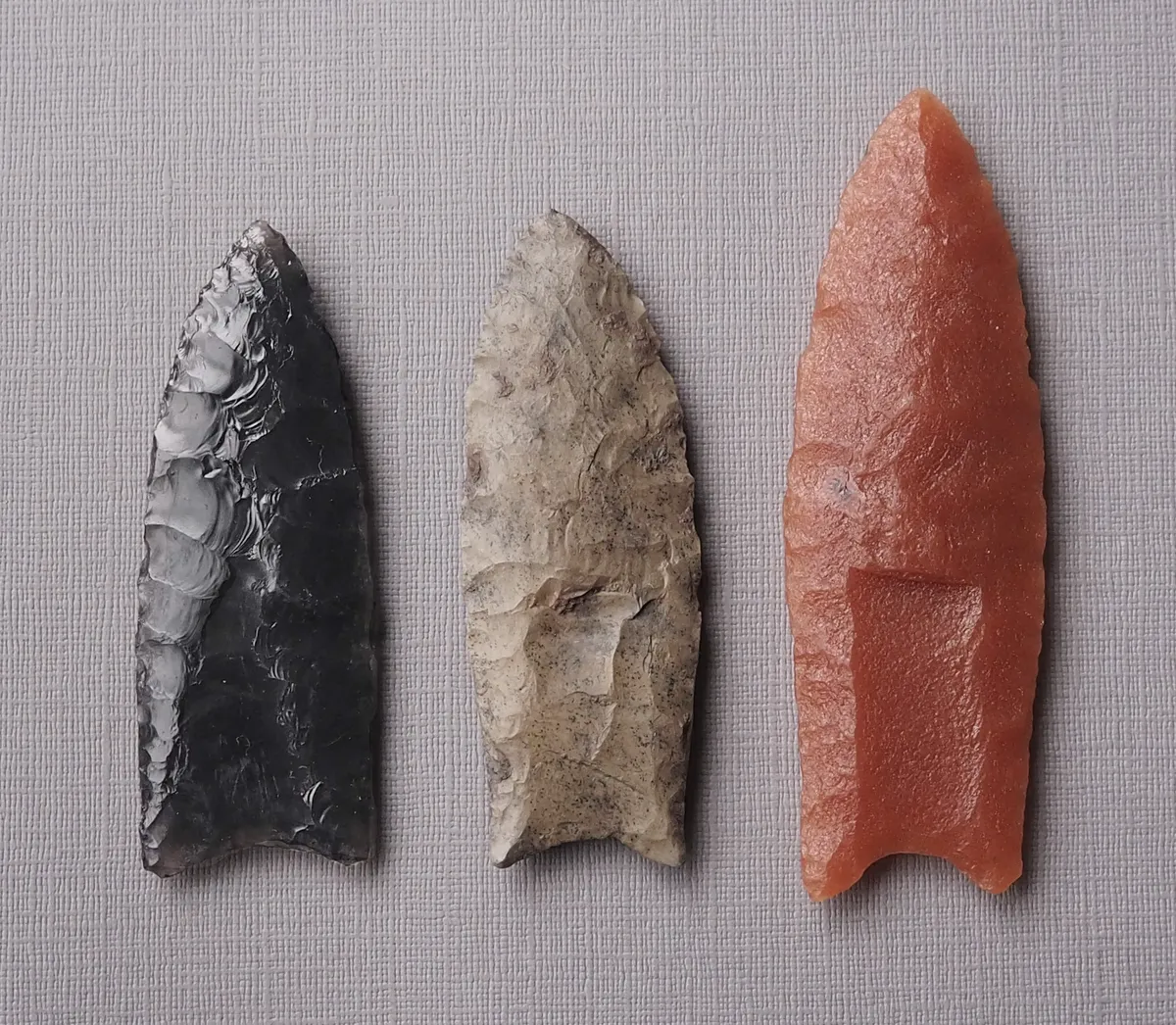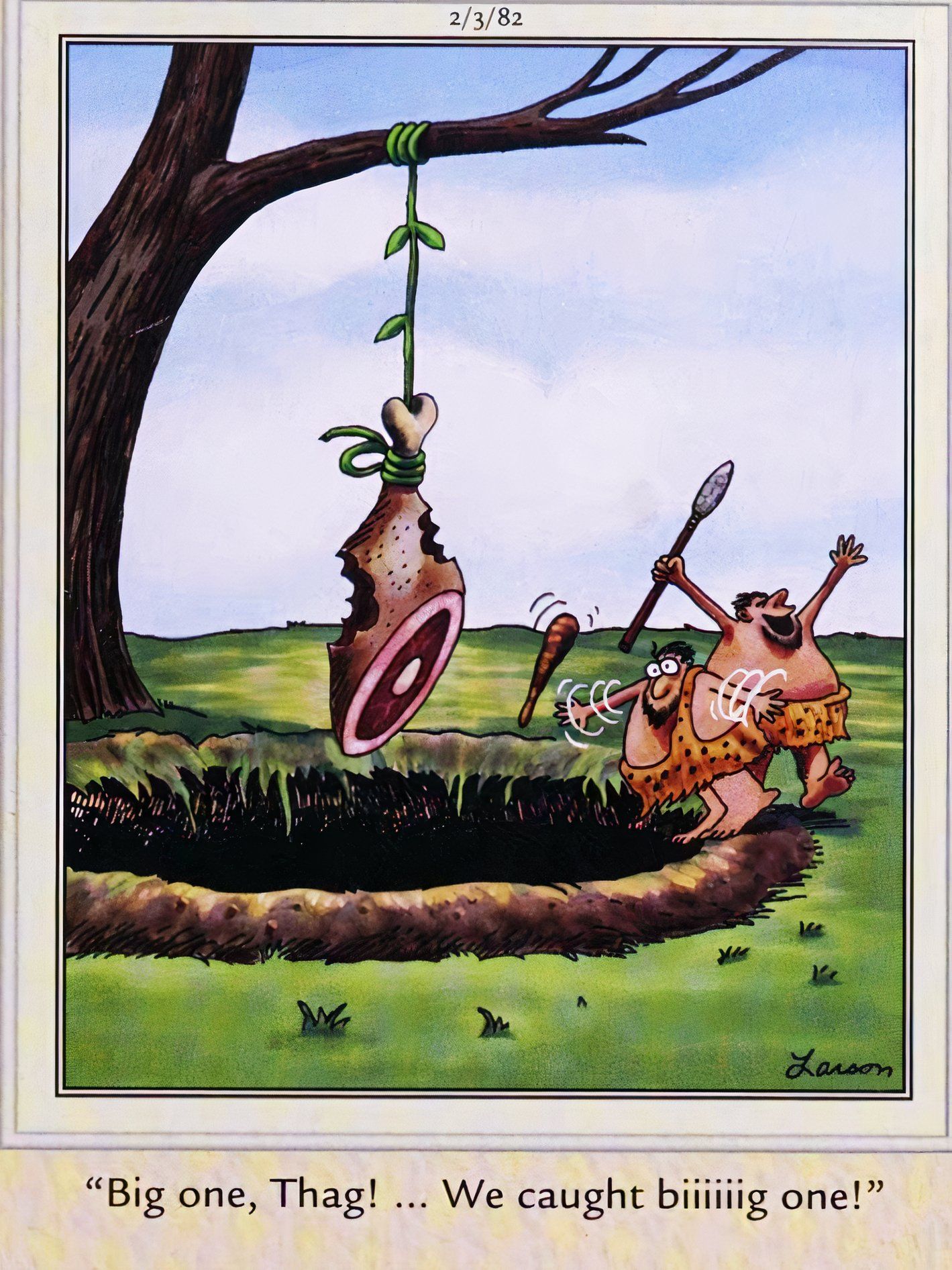
Posted on 08/22/2024 5:30:35 AM PDT by Red Badger
You could never generate this amount of power yourself.

Mammoth hunts would have been incredibly dangerous.
Image credit: Esteban De Armas/Shutterstock.com
North American hunter-gatherers may have developed an innovative method for killing Ice-Age megafauna like mammoths, according to the authors of a new study. Rather than throwing spears at their prey, members of the iconic Clovis culture might have used “braced shaft weapons”, or pikes, to inflict catastrophic injuries on their victims.
“The key elements of the pike are a sharp tip for entering thick hide or armor and a long, sturdy shaft that could be braced in the ground to receive a charge with deadly force resistance,” write the researchers. In other words, the weapon was secured against the earth in order to harness the force of an onrushing animal, rather than relying on the throwing strength of the hunter.
"The kind of energy that you can generate with the human arm is nothing like the kind of energy generated by a charging animal,” explained study author Jun Sunseri in a statement. “It's an order of magnitude different.”
Inspiration for the study was provided by the mystery surrounding the so-called Clovis points, which have been found across North America and dated to between 13,050 and 12,650 years ago. Recognizable for their razor-sharp edges and fluted indentations, the spearheads are regularly retrieved from within the skeletons of mammoths and other Ice Age giants, although scholars are yet to agree over how they were used during hunts.

Replica Clovis points, showing their distinctive shape. Image credit: courtesy of Scott Byram
==================================================================
Wondering if Clovis points might have been set on pikes, the study authors began by reviewing references to this type of weapon in the historical and ethnographic literature. As it turns out, the ancient Greek historian Xenophon reports the use of pikes for hunting large boar, while similar weapons were also employed against “Indian and African war elephants.”
“Pikes were used for well over two millennia to stop charging warhorses in battle,” write the researchers.
To discover how effective such weapons may have been for hunting large prey, the study authors employed a knapping expert to recreate a set of Clovis points, which they then hafted onto pikes. In a series of experiments, the researchers learned that the system functioned somewhat like a hollow-point bullet as the blade became detached from its shaft after penetrating an animal’s hide, ultimately causing “more massive injury than a thrust or launched spear can produce.”

High-speed camera images of force-test of Clovis-pointed spear
High-speed photo sequence during a test, showing how the stone point recedes into and splinters the pike shaft. Image credit: courtesy of Scott Byram
=======================================================================
The fact that the point tends to detach when used on a pike may also explain why Clovis points are often discovered inside mammoth skeletons that show no sign of having been butchered by humans. According to the researchers, some animals may have survived these attacks, yet would have been left with a blade lodged in their body for the rest of their lives.
Taken together, these various findings suggest that the Clovis people may well have used pikes rather than spears when hunting large animals. "This ancient Native American design was an amazing innovation in hunting strategies," says study author Scott Byram.
To develop their theory, the researchers are now planning to build a replica mammoth for use in further experiments with lithic pikes.
The study is published in the journal PLOS ONE.

Yup.
But the second person planted a row or two of pikes and and stampeded a herd towards them...
Not according to a hunter and widlife biologist I know (Dr. Charles Kay) with long experience in Africa with aboriginal guides familiar with elephant hunting. He describes an aboriginal proboscidean hunting process in his book, Wilderness and Political Ecology, pp246-7. First, mammoths would be naive about newly arriving people; they would not be recognized by mammoths as a threat. Gut stick the beast with a short spear. Use dogs to distract its reaction. Then follow it for about three days until it dies of peritonitis.
See above.
There is hungry and then there is lets go “kill a mammoth with sharp sticks hungry”.
My bet is they used atlatls.
Ping
Like at the 4:23 mark in this scene from Braveheart? https://www.youtube.com/watch?v=oXz612JAx4Y
This is somewhat off topic, but I recently saw a demonstration of a staff-sling (a weapon that was believed to be prominent in the ancient Near East at one time. The operator of it could hurl surprisingly heavy stones out to distances just shy of longbow range...and do it consistently. The only downside is that it required noticeably more room to operate than a bow. Another potential drawback was that it delivered concussive force instead of piercing-type damage. Still, I was amazed at the dents that it put in sheet-metal plates at distances of around 80 yards. Getting hit with one of those stones in a relatively unarmored spot would definitely ruin your day.
Flood, Fire, and Famine
in the History of Civilization
by Richard Firestone,
Allen West, and
Simon Warwick-Smith
Thanks Thunder90.
I have read that it was easier to kill the young instead of the adults. Same for wolves and other predators today.
Did he say, "Hold ma beer"?
Right - Encke comet fragments from original 100 mile dia, some Taurid meteors 1 mile in dia, over a period of 100 years.
The area is sort of an upside down comma shape stretching over to Europe & North Africa, and down to South America; just follow the Black Mat deposits
The same mega-fauna existed all across the northern hemisphere, Eurasia and North America almost to the equator in some places.
Yet they all seemed to have died out simultaneously. Maybe CoVid-0000001?.........🙄
Well, maybe they didn’t just stand there holding the pike waiting for a charge. They could have pre-planted the pikes in a certain location, and then just led the animals into a trap.
Obviously that’s easier in a hilly area with box canyons and such, but early humans also built man-made structures called “kites” that may have served a similar purpose for hunting.
Sure, that sounds like a relatively easy way to kill an elephant, but 3 days of waste leaking into the body cavity causing infection is basically fouling the meat before you can butcher it, isn’t it?
Slings were powerful but I think shields made them obsolete. A wicker shield might not be enough but a hide shield or hide and wood combined is going to negate that weapon and make something like a javelin more effective even if it has shorter range.
It's amazing what cooking plus a hardened gut can deal with. If my dog finds a kill, she happily consumes meat older than that without cooking at all. Pretty amusing to see her so happy with a stinking floppy leg hanging from her mouth by its ligaments.
Clovis man couldn't afford to be picky. Survival was everything.
Disclaimer: Opinions posted on Free Republic are those of the individual posters and do not necessarily represent the opinion of Free Republic or its management. All materials posted herein are protected by copyright law and the exemption for fair use of copyrighted works.